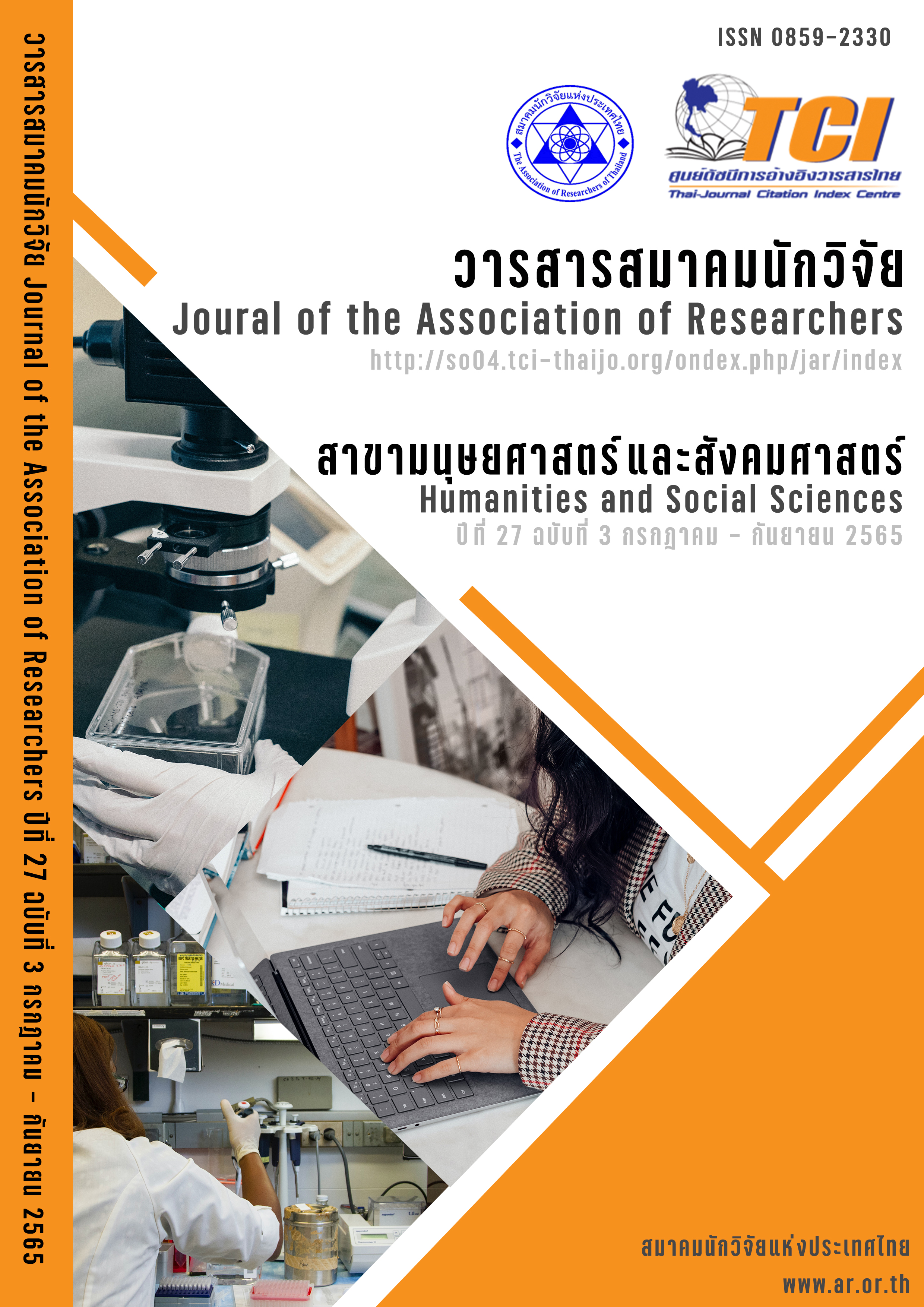Influences of U&G Motivations on YouTube Users’ Active Engagement with Telepresence as Mediator
Main Article Content
Abstract
This research paper aimed to test the structural equation model of YouTube users’ motivations—from the Uses and Gratifications (U&G) theory—as predictors of active YouTube engagement and telepresence as mediators. This paper was quantitative research, using Web Survey to collect data from 400 samples who followed related videogame content on the selected YouTube channels. Using the Structural Equation Modeling technique to test its hypotheses, this paper found that U&G motivations directly determined telepresence and active engagements while telepresence did not statistically contribute directly toward active YouTube engagement. However, telepresence turned out to be a mediator fully and significantly enabling U&G motivation to influence indirectly toward active YouTuber engagements. The findings of this paper contributed significantly to the social media competitive landscape by helping YouTubers to understand how to broadcast the right content to generate telepresence—the virtual environments—enabling efficient and effective active engagements among their followers.
Article Details

This work is licensed under a Creative Commons Attribution-NonCommercial-NoDerivatives 4.0 International License.
บทความที่ปรากฏในวารสารนี้ เป็นความรับผิดชอบของผู้เขียน ซึ่งสมาคมนักวิจัยไม่จำเป็นต้องเห็นด้วยเสมอไป การนำเสนอผลงานวิจัยและบทความในวารสารนี้ไปเผยแพร่สามารถกระทำได้ โดยระบุแหล่งอ้างอิงจาก "วารสารสมาคมนักวิจัย"
References
Bagozzi, R. P., & Dholakia, U. M. (2006). Open source software user communities: A study of participation in Linux user groups. Management science, 52(7), 1099-1115.
Beukeboom, C. J., Kerkhof, P., & de Vries, M. (2015). Does a virtual like cause actual liking? How following a brand's Facebook updates enhances brand evaluations and purchase intention. Journal of Interactive Marketing, 32, 26-36.
Brodie, R. J., Ilic, A., Juric, B., & Hollebeek, L. (2013). Consumer engagement in a virtual brand community: An exploratory analysis. Journal of business research, 66(1), 105-114.
Chi-Square Test Calculator. (2018, November 13). Retrieved from https://www.socscistatistics.com/tests/chisquare2/default2.aspx.
Dillman, D. A. (2011). Mail and Internet surveys: The tailored design method--2007 Update with new Internet, visual, and mixed-mode guide. John Wiley & Sons.
Fornell, C., & Larcker, D. F. (1981). Evaluating structural equation models with unobservable variables and measurement error. Journal of marketing research, 18(1), 39-50.
Fortin, D. R., & Dholakia, R. R. (2005). Interactivity and vividness effects on social presence and involvement with a web-based advertisement. Journal of business research, 58(3), 387-396.
Gunzler, D., Chen, T., Wu, P., & Zhang, H. (2013). Introduction to mediation analysis with structural equation modeling. Shanghai archives of psychiatry, 25(6), 390.
Hootsuite (2020). Digital 2020: Global Digital Overview. Retrieved May 14, 2020, from https://wearesocial.com.
Katz, E., Blumler, J. G., & Gurevitch, M. (1973). Uses and gratifications research. The public opinion quarterly, 37(4), 509-523.
Khan, M. L. (2017). Social media engagement: What motivates user participation and consumption on YouTube?. Computers in human behavior, 66, 236-247.
Nonnecke, B., & Preece, J. (1999). Shedding light on lurkers in online communities. Ethnographic studies in real and virtual environments: Inhabited information spaces and connected communities, Edinburgh, 123-128.
Nowak, K. L., & Biocca, F. (2003). The effect of the agency and anthropomorphism on users' sense of telepresence, copresence, and social presence in virtual environments. Presence: Teleoperators & Virtual Environments, 12(5), 481-494.
Pelet, J. É., Ettis, S., & Cowart, K. (2017). Optimal experience of flow enhanced by telepresence: Evidence from social media use. Information & Management, 54(1), 115-128.
Petrova, E., Gross, N., & Insights, G. (2017). 4 reasons people watch gaming content on youtube. Think with Google.
Steuer, J. (1992). Defining virtual reality: Dimensions determining telepresence. Journal of communication, 42(4), 73-93.
Wang, Q., Fink, E. L., & Cai, D. A. (2008). Loneliness, gender, and parasocial interaction: A uses and gratifications approach. Communication Quarterly, 56(1), 87-109.


